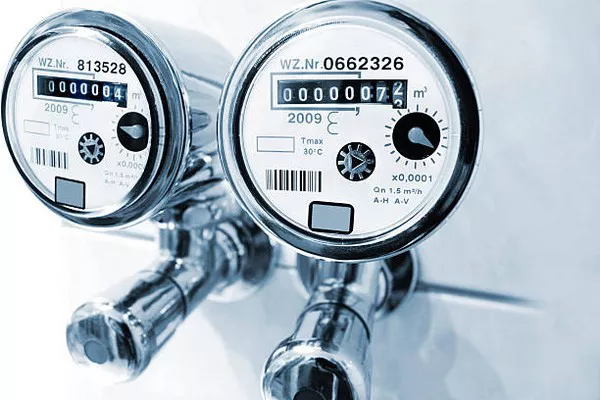Introduction Flow measurement is a critical aspect of various industrial processes, from monitoring the flow of liquids and gases in pipelines to ensuring accurate billing in utility services. Among the numerous flow measurement techniques available, orifice flow meters stand out as one of the most widely used and trusted devices. In this article, we delve into the mechanics and applications of orifice flow meters, exploring their working principles, advantages, limitations, and practical considerations.
Understanding Orifice Flow Meters
An orifice flow meter is a primary device used for measuring the rate of fluid flow in a pipeline. It operates based on the principle of restricting the flow through a specifically sized orifice plate installed in the pipeline. The pressure difference generated across the orifice plate is directly proportional to the square of the flow rate, as per Bernoulli’s principle and the law of conservation of energy.
Components of an Orifice Flow Meter:
Orifice Plate: The central component of the orifice flow meter is the orifice plate, which is a thin, flat metal disc with a precisely machined hole (the orifice) in the center. The diameter of the orifice is carefully chosen based on the expected flow rates and the fluid properties.
Flanges: Orifice plates are typically installed between two flanges in a pipeline. These flanges provide the means for securing the orifice plate in place and for connecting the meter to the pipeline.
Pressure Tappings: Pressure tappings are small holes drilled into the pipeline upstream and downstream of the orifice plate. These tappings allow for the measurement of pressure differentials across the orifice.
Manometers or Transmitters: Instruments such as manometers or electronic transmitters are used to measure the pressure differentials across the orifice plate.
How Orifice Flow Meters Work:
When fluid flows through a pipeline containing an orifice plate, it is forced to pass through the small hole in the orifice plate. This constriction in flow area causes an increase in fluid velocity and a corresponding decrease in pressure, as per the principles of fluid dynamics.
The pressure drop across the orifice plate is measured using pressure tappings located upstream and downstream of the orifice. The difference in pressure readings is directly related to the flow rate according to the Bernoulli’s principle.
The relationship between the pressure drop (ΔP), flow rate (Q), and other parameters such as fluid density (ρ) and orifice diameter (d) is described by the Bernoulli equation and the continuity equation. For a given orifice plate design, the flow rate can be calculated using empirical equations or standardized flow coefficients.
Advantages of Orifice Flow Meters:
Simplicity: Orifice flow meters are relatively simple in design and construction, making them easy to install and maintain.
Cost-Effectiveness: Compared to some other flow measurement devices, orifice flow meters are often more economical, especially for large pipelines and high-flow applications.
Wide Range of Applications: Orifice flow meters can be used for measuring the flow of various fluids, including liquids, gases, and steam, across a wide range of temperatures and pressures.
Compatibility: Orifice flow meters are compatible with most pipe materials and can be easily retrofitted into existing pipelines.
Accuracy: When properly calibrated and installed, orifice flow meters can provide accurate flow measurements within a reasonable range of flow rates.
Limitations of Orifice Flow Meters:
Pressure Loss: Orifice flow meters induce a pressure drop in the pipeline, which can lead to energy losses, especially in systems where minimizing pressure drop is critical.
Turndown Ratio: Orifice flow meters have limitations in their turndown ratio, which is the range of flow rates over which they can provide accurate measurements. At low flow rates, the pressure differential across the orifice plate may be too small to measure accurately.
Sensitivity to Fluid Properties: Orifice flow meters may be sensitive to changes in fluid properties such as viscosity, density, and temperature, which can affect their accuracy.
Calibration Requirements: Orifice flow meters require periodic calibration to ensure accurate measurements, especially if there are variations in operating conditions or fluid properties.
Applications of Orifice Flow Meters:
Orifice flow meters find widespread use across various industries and applications, including:
Oil and Gas: Monitoring the flow of crude oil, natural gas, and refined petroleum products in pipelines.
Chemical Processing: Measuring the flow of chemicals, solvents, and gases in manufacturing processes.
Water and Wastewater: Monitoring water flow in municipal water supply systems, wastewater treatment plants, and irrigation systems.
HVAC Systems: Measuring the flow of air and refrigerants in heating, ventilation, and air conditioning (HVAC) systems.
Power Generation: Monitoring steam flow in boilers and turbines in power plants.
Practical Considerations for Orifice Flow Meter Installation and Operation:
Proper Sizing: Selecting the appropriate orifice plate size and type based on the expected flow rates, fluid properties, and desired accuracy.
Installation: Ensuring proper installation of the orifice plate with correct orientation and alignment to minimize installation errors and inaccuracies.
Upstream and Downstream Piping: Ensuring sufficient straight pipe lengths upstream and downstream of the orifice plate to promote laminar flow and reduce turbulence.
Calibration: Performing regular calibration checks to verify the accuracy of the flow measurements and adjusting the instrument if necessary.
Maintenance: Implementing a preventive maintenance program to clean, inspect, and replace components as needed to ensure reliable performance over time.
See Also How Does A Flow Meter Work
Conclusion:
Orifice flow meters are reliable, cost-effective devices for measuring the flow of fluids in pipelines across a wide range of industries and applications. Understanding the working principles, advantages, limitations, and practical considerations of orifice flow meters is essential for selecting, installing, and maintaining these instruments effectively. With proper installation, calibration, and maintenance, orifice flow meters can provide accurate and dependable flow measurements critical for optimizing industrial processes and ensuring regulatory compliance.

